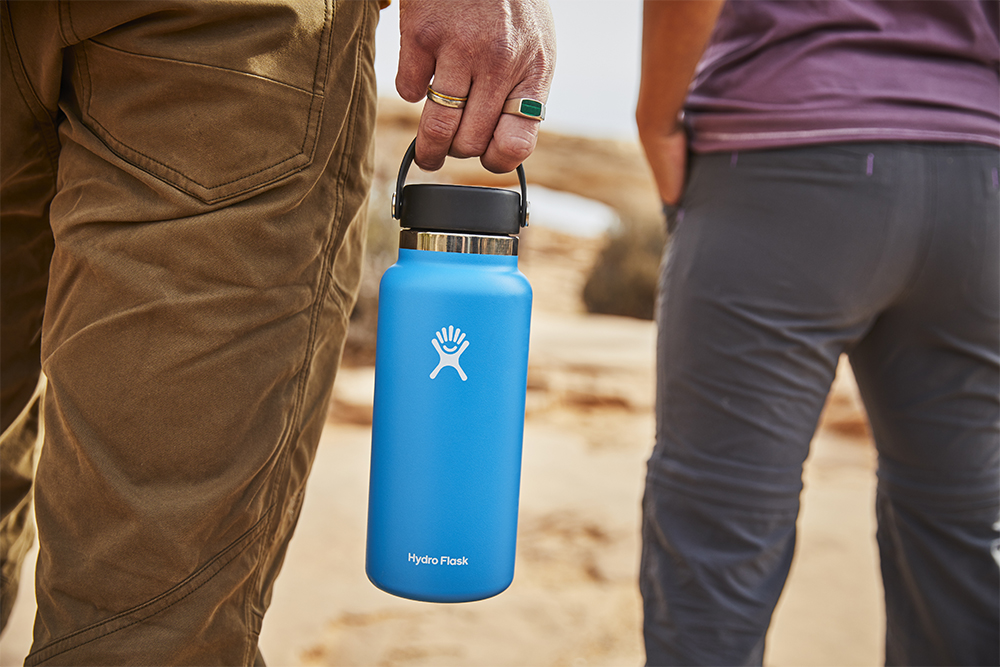I had the chance to catch up with the folks at Helen of Troy, a multi-brand consumer goods company to talk about their recent filing for a general exclusion order with the International Trade Commission for their popular Hydro Flask brand — a brand protection tool we have explored previously in the BPP, namely in the March, 2020 edition, Professional Pointer: How Brand Owners Can Use the ITC to Knock Out Knockoffs. Helen of Troy’s legal team provided some great information on their decision to file for the order and they shared their valuable insights.
Leah Evert-Burks, Editor in Chief
Why did you pursue a general exclusion order as a means of protection against counterfeits of your Hydro Flask products?

A general exclusion order is warranted to prevent circumvention of a limited exclusion order in light of the widespread pattern of violation and fundamental challenges in identifying sources of infringing goods. As discussed throughout the Hydro Flask Complaint filed with the ITC, counterfeit and infringing products are sold across multiple online marketplaces and by multiple anonymous sellers, such that a limited exclusion order against only the named Respondents (thus limited) would fail to stop the flow of infringing products into the United States. These counterfeits are lower quality materials and are produced through sub-standard manufacturing. Without such identifying information of the manufacturer, there is a clear risk of circumvention for any limited exclusion order as the manufacturer (e.g. Respondents) can simply change carriers or use intermediaries to continue to mask their identities. Hydro Flask has been able to identify tens of thousands of infringing sales for importation of knockoff and counterfeit goods. Many of these sales are made via the Internet, and especially through online marketplaces. Many storefronts on these online marketplaces are anonymous and provide no information to identify and locate manufacturers and sellers. Moreover, certain marketplaces purposefully obfuscate the identities of the individual storefronts and the buyers of the products. There are thousands upon thousands of infringing products listed across dozens of Internet platforms across the globe, each with its own reporting and takedown procedures. These platforms often conceal identifying information about manufacturers, sellers, and buyers. Additionally, many sellers maintain multiple storefronts on the same platform and across platforms, doing business under more than one name, ship from multiple addresses, and/or form intricate arrays of related businesses, thus easily circumventing targeted forms of enforcement, such as takedown notices. This makes it difficult, if not impossible, to determine the source of infringing products.
Did any other brand’s similar filings with the U.S. International Trade Commission influence your decision to file? If yes, which ones and why?
No particular brand influenced our decision. We knew the Section 337 action with the ITC was an effective method of stopping the flow of infringing Hydro Flasks into the United States especially when it’s nearly impossible to identify the source of the infringing goods.
What other aspects of IP protection do you think are valuable and/or essential in guarding against counterfeiting and/or infringement?
Obtaining patents and trademark registrations, both domestically and foreign, in the proper use classes can be important in guarding against counterfeiting and/or infringement.
Where do you rank an exclusion order in your toolbox of protections?
Exclusion orders, both limited and general, are highly-effective tools in preventing counterfeit goods from entering the country at ports of entry. Exclusion orders also serve as a deterrent to others who consider counterfeiting IP-protected products.
Are there lessons learned from this ITC process that would be beneficial for other brand owners?
ITC is a fast and intense process but well worth it for brand owners to consider as a remedy to prevent infringing goods from entering the U.S. Brand owners must have a solid strategy in place for the ITC proceeding and have a clear idea of the ultimate outcome being sought, such as a general exclusion order.
How will you measure the success of this initiative?
Indicators of success include issuance of consent orders, limited exclusion orders, cease and desist order to exclude existing infringing inventory in the U.S., and a general exclusion order on the asserted IP. Other indicators of success could include fewer counterfeits available for purchase online on domestic and foreign marketplaces.
THE BRAND PROTECTION PROFESSIONAL |MARCH 2021 | VOLUME 6 NUMBER 1
2021 COPYRIGHT MICHIGAN STATE UNIVERSITY BOARD OF TRUSTEES
